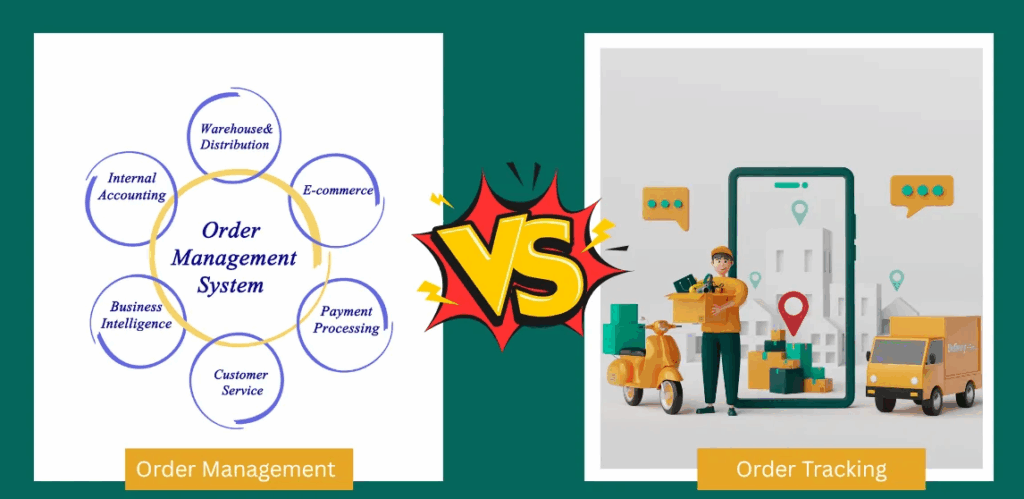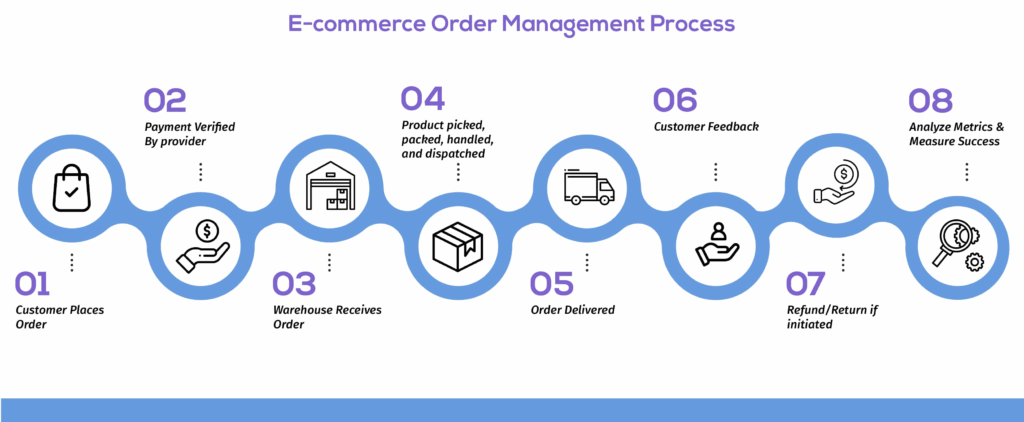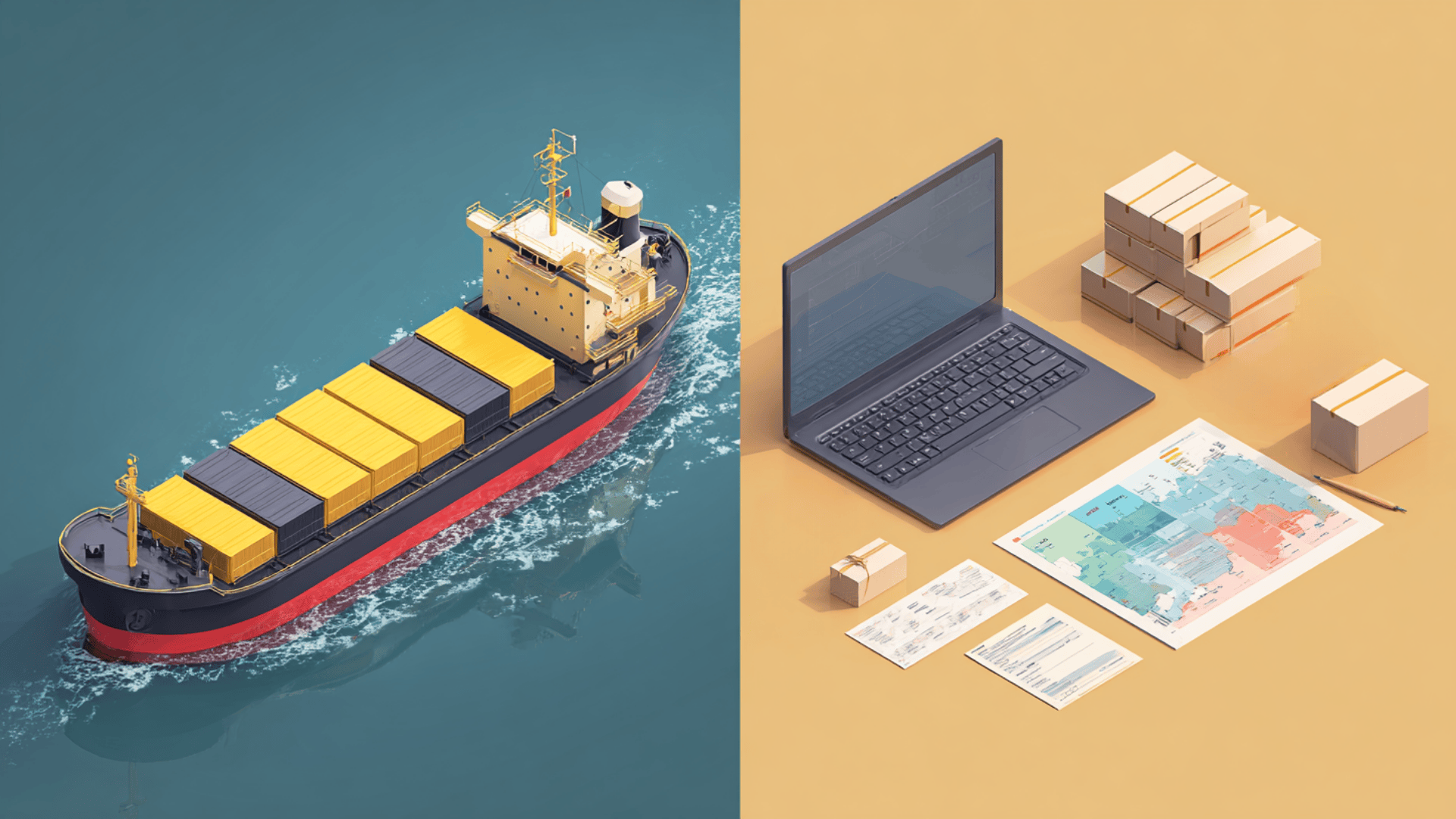OMS Tracking definiert Order Management Excellence neu
Die Auftragsverwaltung ist das Herzstück einer jeden Lieferkette. Jahrelang verließen sich Unternehmen auf herkömmliche Systeme - manuelle Tabellenkalkulationen, isolierte Datenbanken oder einfache ERP-Erweiterungen -, um ihre Aufträge zu verwalten. Doch mit wachsenden Kundenerwartungen und der Nachfrage nach Echtzeit-Updates, OMS-Verfolgung (Auftragsverwaltungssystem mit Verfolgungsfunktionen) entwickelt sich zu einem Wendepunkt.
Dieser Artikel befasst sich mit den Unterschieden zwischen der traditionellen Auftragsverwaltung und der OMS-Verfolgung und vergleicht deren Leistung, Herausforderungen und Nutzen für die moderne Logistik.

Was ist die traditionelle Ordnung?
Die traditionelle Auftragsverwaltung bezieht sich auf ältere Methoden der Bearbeitung von Kundenaufträgen. Diese beinhalten in der Regel:
- Manuelle Prozesse: Telefonanrufe, E-Mail-Bestätigungen oder Tabellenkalkulationen zur Auftragsverfolgung.
- Begrenzte Sichtbarkeit: Die Daten sind über verschiedene Abteilungen verstreut und werden nicht zentral erfasst.
- Reaktive Arbeitsabläufe: Probleme werden nicht proaktiv, sondern erst nach ihrem Auftreten angegangen.
Grenzen der traditionellen Systeme
- Mangel an Echtzeit-Updates schafft blinde Flecken.
- Hohe Abhängigkeit von menschlichen Eingaben, was die Fehlerquote erhöht.
- Schwierig zu skalieren, wenn Hunderte oder Tausende von Aufträgen bearbeitet werden.
- Eingeschränkte Kundentransparenz, die zu wiederholten Nachfragen zum Auftragsstatus führt.
- Beispiel: Ein Einzelhändler, der sich nur auf Excel-Tabellen verlässt, kann vielleicht 50 Bestellungen pro Tag bearbeiten. Aber wenn die Zahl der Bestellungen auf 500 ansteigt, können sich kleine Fehler - wie eine einzige verpasste Aktualisierung - zu Kundenbeschwerden, verspäteten Lieferungen und einem beschädigten Ruf der Marke auswachsen.
Was ist OMS Tracking?
Auftragsverwaltungssystem mit integrierter Verfolgung Auftragsverwaltung mit durchgängige Sichtbarkeit der Verfolgung. Statt nur Aufträge zu erfassen, wird ihr Status über Spediteure, Lager und Liefernetzwerke hinweg kontinuierlich überwacht und aktualisiert.

Hauptmerkmale des OMS Tracking
- Sichtbarkeit in Echtzeit in jeder Phase des Bestellvorgangs.
- Zentralisierte Datenverwaltung das Vertrieb, Lagerhaltung und Logistik miteinander verbindet.
- Integration mit Transportunternehmen für Live-Tracking-Updates.
- Automatisierte Warnmeldungen für Verspätungen, Ausnahmen oder abgeschlossene Lieferungen.
- Analytische Dashboards die die Auftragsgenauigkeit, die Leistung des Spediteurs und die Lieferzeiten hervorheben.
Vorteile für Unternehmen
- Schnellere Reaktion auf Störungen.
- Verbesserte Zusammenarbeit zwischen Vertrieb, Logistik und Kundendienst.
- Geringere Kosten durch weniger Fehler und genauere Erfüllung.
- Erhöhte Kundenzufriedenheit durch Transparenz.
Leistungsvergleich: OMS-Tracking vs. Traditionell
1. Geschwindigkeit und Genauigkeit
- Traditionell: Die manuelle Dateneingabe erhöht die Fehlerquote, verzögert Bestätigungen und verlangsamt die Auftragsabwicklung. Ein fehlender Eintrag kann eine Sendung um Tage verzögern.
- OMS-Verfolgung: Die Automatisierung gewährleistet Genauigkeit, während Echtzeit-Updates den Teams ein sofortiges Handeln ermöglichen. Selbst wenn es bei einem Spediteur zu einer Verzögerung kommt, leitet das System automatisch eine Umleitung ein oder informiert die Kunden.
2. Kundenerfahrung
- Traditionell: Die Kunden müssen anrufen oder eine E-Mail schreiben, um sich über ihre Bestellung zu informieren. Die Frustration wächst, wenn die Informationen veraltet sind.
- OMS-Verfolgung: Die Kunden erhalten Live-Updates, Links zur Sendungsverfolgung und proaktive Benachrichtigungen. Dadurch werden Anrufe mit der Frage "Wo ist meine Bestellung?" um bis zu 50% reduziert.

3. Skalierbarkeit
- Traditionell: Kämpft mit hohen Auftragsvolumina. Die Einstellung von mehr Personal ist die einzige Möglichkeit, das Wachstum zu bewältigen, was die Kosten erhöht.
- OMS-Verfolgung: Tausende von Aufträgen werden dank Automatisierung und Integration nahtlos abgewickelt. Unternehmen können in neue Regionen expandieren, ohne dass ein proportionaler Anstieg des Personalbestands erforderlich ist.
4. Kosteneffizienz
- Traditionell: Hohe Arbeitskosten, häufige Fehler und ineffizientes Ausnahmemanagement.
- OMS-Verfolgung: Reduziert die Gemeinkosten, da manuelle Aufgaben wegfallen und kostspielige Fehler vermieden werden. Außerdem optimiert es die Auswahl der Spediteure und hilft Unternehmen, Versandkosten zu sparen.
5. Daten und Analytik
- Traditionell: Die Berichte sind einfach und in der Regel retrospektiv, was es schwierig macht, Trends zu erkennen.
- OMS-Verfolgung: Erweiterte Dashboards zeigen KPIs in Echtzeit an, weisen auf Ineffizienzen hin und unterstützen eine vorausschauende Entscheidungsfindung.
Praktische Anwendungen des OMS-Trackings
Für Logistikdienstleister
Spediteure und 3PLs erhalten eine bessere Kontrolle über die Lieferungen, wodurch Verspätungen und Lieferausfälle reduziert werden. Sie können auch die Leistung der Spediteure vergleichen und entscheiden, welche Partner die Servicelevels durchgängig erfüllen.
Für Einzelhändler
E-Commerce-Geschäfte können OMS verbinden Verfolgung direkt mit ihren Websites, so dass die Kunden in Echtzeit über ihre Bestellungen informiert werden. Dies führt zu weniger Nachfragen, höherer Zufriedenheit und stärkerer Markentreue.
Für Hersteller
Die OMS-Verfolgung lässt sich in Bestandssysteme integrieren, so dass Unternehmen genau wissen, wie viel Bestand noch vorhanden ist, und Überverkäufe vermeiden können. Außerdem hilft es, die B2B-Auftragsabwicklung zu rationalisieren.
Für Kunden
Endnutzer genießen ein transparentes Einkaufserlebnis. Genau zu wissen, wo sich ein Paket befindet, verringert die Ängste nach dem Kauf und schafft Vertrauen. Untersuchungen zeigen, dass Kunden eher bereit sind, erneut bei Händlern einzukaufen, die eine zuverlässige Sendungsverfolgung anbieten.

Herausforderungen bei der traditionellen vs. OMS-Verfolgung
Traditionelle Herausforderungen
- Datensilos führen zu schlechter Kommunikation zwischen Abteilungen.
- Menschliches Versagen führt häufig zu Ungenauigkeiten.
- Mangelnde Rechenschaftspflicht macht es schwer nachzuvollziehen, wer was bearbeitet hat.
Herausforderungen bei der OMS-Verfolgung
- Erfordert Vorabinvestitionen in Software und Integration.
- Das Personal muss möglicherweise geschult werden, um die Vorteile zu maximieren.
- Abhängig von der Genauigkeit der Betreiberdaten - die Nachverfolgung leidet, wenn die Betreiber keine zuverlässigen Updates liefern.
Trotz dieser Hürden überwiegen die langfristigen Vorteile der OMS-Verfolgung die anfänglichen Schwierigkeiten bei der Einrichtung. Viele Unternehmen sehen den ROI innerhalb des ersten Jahres durch Kosteneinsparungen und eine bessere Kundenbindung. Die Nachverfolgung überwiegt die anfänglichen Herausforderungen bei der Einrichtung.
Best Practices für Unternehmen, die auf OMS-Tracking umsteigen
- Klein anfangen: Beginnen Sie mit Schlüsselmärkten oder -trägern, bevor Sie sie weltweit einführen.
- Wählen Sie eine integrationsfreundliche Software: Stellen Sie sicher, dass Ihr OMS problemlos mit dem elektronischen Handel verbunden ist, ERPund Trägerplattformen.
- Mitarbeiter schulen: Unterstützung der Mitarbeiter bei der Anpassung an die Automatisierungs- und Verfolgungsinstrumente.
- Datenanalytik nutzen: Verwenden Sie OMS-Berichte, um die Bestandsplanung und -prognose zu verbessern.
- Klare KPIs festlegen: Messen Sie den Erfolg anhand von Lieferzeiten, Erfüllungsgenauigkeit und Kundenzufriedenheitswerten.
- Diese Praktiken stellen sicher, dass Unternehmen das OMS-Tracking nicht nur einführen, sondern seinen vollen Nutzen daraus ziehen.
Die Zukunft der Auftragsverwaltung
Angesichts der steigenden Kundenerwartungen an Geschwindigkeit und Transparenz, OMS-Tracking wird zum Standard. Unternehmen, die weiterhin nur traditionelle Methoden anwenden, laufen Gefahr, ins Hintertreffen zu geraten.

Zu den künftigen Trends gehören:
- KI-gestützte Prognosen um Lieferverzögerungen vorherzusagen.
- Automatisierte Kundenkommunikation für proaktive Problemlösungen.
- Integrierte grüne Logistik, die umweltfreundlich sind Versand Auswahlmöglichkeiten.
- Vereinheitlichte Plattformen wie Postalparcelwo OMS-Tracking, Carrier-Management und Fulfillment-Services an einem Ort zusammenkommen.
Zukunftsorientierte Unternehmen setzen Systeme wie Postpaketdie nicht nur die Auftragsverwaltung rationalisieren, sondern auch fortschrittliche Transparenzfunktionen für den weltweiten Versand bieten. Postalparcel ist mehr als nur ein System - es ist ein Service, der es Unternehmen ermöglicht, die Auftragsabwicklung, den Versand und die Kundenkommunikation an einem Ort zu erledigen.
Schlussfolgerung
Das traditionelle Auftragsmanagement hat in der Vergangenheit funktioniert, aber die heutige schnelllebige E-Commerce- und Logistiklandschaft erfordert Sichtbarkeit in Echtzeit und proaktive Kontrolle. Die OMS-Verfolgung übertrifft herkömmliche Methoden erheblich, indem sie die Genauigkeit, Kundenzufriedenheit, Skalierbarkeit und Kosteneffizienz verbessert.
Für Unternehmen, die eine Modernisierung anstreben, ist die Einführung von OMS-Tracking nicht mehr optional, sondern unverzichtbar. Und mit Plattformen wie Postpaketkönnen Unternehmen von den Vorteilen erschwinglicher, dienstleistungsorientierter Lösungen profitieren, die ihnen Globaler Versand, Speditionsmanagement und Auftragsverfolgung in einem einzigen, optimierten System.
Einblicke in die Industrie
Nachrichten über den Posteingang
Nulla turp dis cursus. Integer liberos euismod pretium faucibua








